X Museum launches second triennial in Beijing
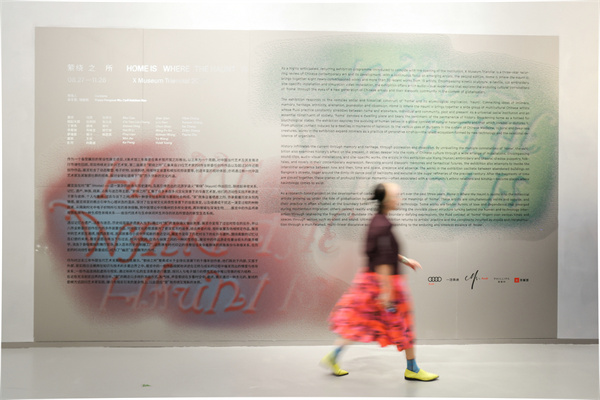
Home Is Where the Haunt Is, the second X Museum Triennial, opens in Beijing on Aug 26, 2023. [Photo/Courtesy of X Museum]
Hot on the heels of X Pink 101, X Museum's inaugural exhibition at its new location in Langyuan Station, the three-year-old art museum launched its second triennial Home Is Where the Haunt Is on Saturday in Beijing.
First held in May 2020 as the museum opened its doors, X Museum Triennial is an exhibition program that offers a three-year recurring review of Chinese contemporary art and its development with a focus on emerging artists, according to Wu Dongxue, the institution's chief curator who curated its inaugural triennial.
The triennial's second edition, co-curated by Wu and Rao Kuizhen, the museum's director of public programs, features eight newly commissioned works and more than 30 recent works from 19 millennial artists. On view is a rich mix of mediums, including kinetic sculpture, e-textile, silk embroidery, site-specific installation, and simulation video installation, offering the audience a multi-dimensional museum experience.
Themed Home Is Where the Haunt Is, the exhibit responds to the complex social and historical construct of "home" and "haunt", which share the same etymological root in many languages, noted the curators.
A universal concept and an essential constituent of almost every society, home is a vessel that holds intimacy, memory, heritage, possession, obsession and many more things, according to Wu.
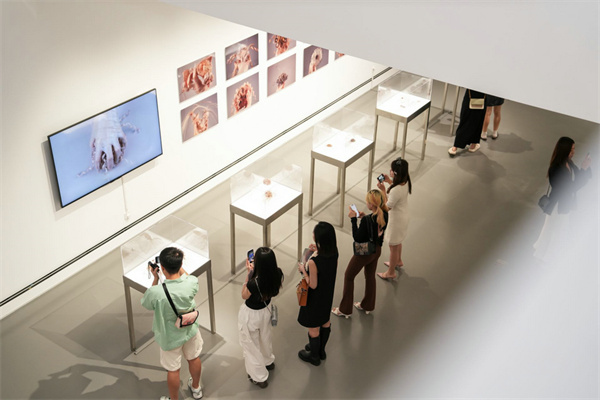
Shao Chun's kinetic sculpture Future Touch is on display at the second X Museum Triennial in Beijing. [Photo/Courtesy of X Museum]
"Haunt" in the exhibit's title is inspired by "hauntology", a term introduced by French philosopher Jacques Derrida in his 1993 book Specters of Marx, in which he argued that Marxism would haunt Western society from beyond the grave.
The term was taken up by theorists and critics like Mark Fisher in the 2000s to criticize contemporary culture's persistent recycling of retro aesthetics and incapacity to escape old social forms. Today, hauntology is widely invoked in fields such as visual arts, philosophy, electronic music, politics, fiction and literary criticism.
Noting that history infiltrates the current through memory and heritage, through possession and obsession, the curators handpicked a group of multicultural Chinese artists growing up in a globalized world, whose fluid practices bestride cultures and fuse past and present. The works on display shine a spotlight on the hauntological dimension of their practices.
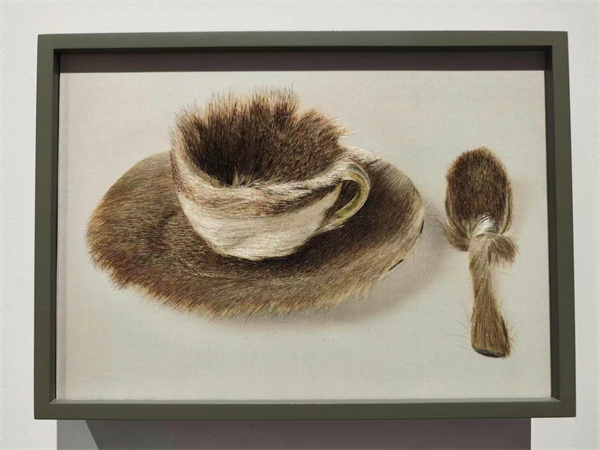
One work from Wang Ye's Embroidernity Series features Meret Oppenheim's sculpture Object. [Photo by Yang Xiaoyu/chinadaily.com.cn]
For example, Changsha-born artist Wang Ye, 32, studied both design at the Central Academy of Fine Arts in China and sculpture at Yale School of Art in the US. He is known for integrating traditional folk arts and crafts into his multi-media creations. The artist learned fishnet knitting techniques in his hometown and is learning Xiang embroidery, a millennia-old craft in his home province Hunan.
On display at the Beijing museum's triennial are three pieces from Wang's Embroidernity Series (2020)—Kazimir Malevich's Woman with Pails: Dynamic Arrangement, Joan Miro's Still Life with Old Shoe, and Meret Oppenheim's sculpture Object, all in embroidery. When looking from afar, gallery-goers may first feel glad from the visual familiarity of those modernist masterpieces, and soon may start questioning why these works produced almost 100 years ago are at a contemporary art exhibition. Walking closer, they would examine the works in awe, marveling at the beautiful sheen and the meticulous needlework, which makes the gazelle fur covering the saucer and teacup in Oppenheim's work seem almost real.
The artist underpinned the three pieces with a semi-fictional narrative through the perspective of a Xiang embroidery inheritor. Back in 1989, after returning home from an overseas product exposition, she remade the modernist works in the medium that she was best at, as an attempt to understand modernity. Marrying Xiang embroidery, a traditional medium known for motifs such as flowers, figures and animals, with new forms, Wang inspires the audience to rethink the concepts of "traditional" and "new", "original" and "replica", critics remarked.
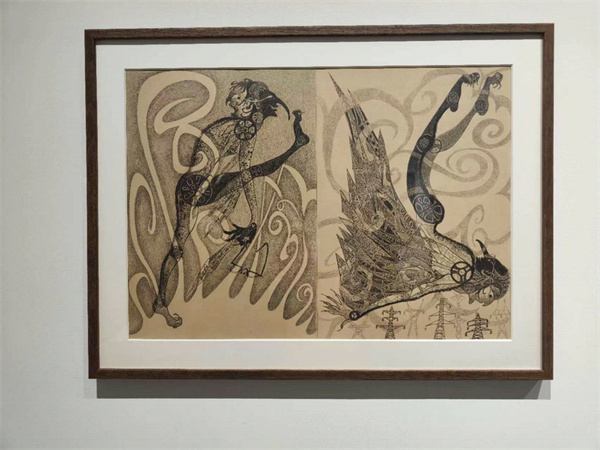
Min Jia's graphite drawing Falling Goose and Flying Goose, is on display at the second X Museum Triennial in Beijing. [Photo by Yang Xiaoyu/chinadaily.com.cn]
Shaanxi shadow puppetry, featured in 22-year-old artist and writer Min Jia's two graphite drawings — Falling Goose and Flying Goose and White Peacock and White Peacock's Shadow, is a more readily recognizable traditional Chinese folk art form at the triennial. The artist portrayed the geese and peacocks in an anthropomorphic manner by giving them limbs, and highlighted their joints with gears, making them look like maneuverable shadow puppets.
Min Jia, who was born in Xinjiang and raised overseas, can hardly speak Chinese but has developed a fascination with shadow puppetry, partly because they suffer from fibromyalgia, a chronic pain disorder, according to Rao. The artist sees the portrayal of human anatomy in shadow puppetry as a mirror of Chinese people's view of the universe and the acupuncture points on the human body, which has expanded their visual understanding of mutation.
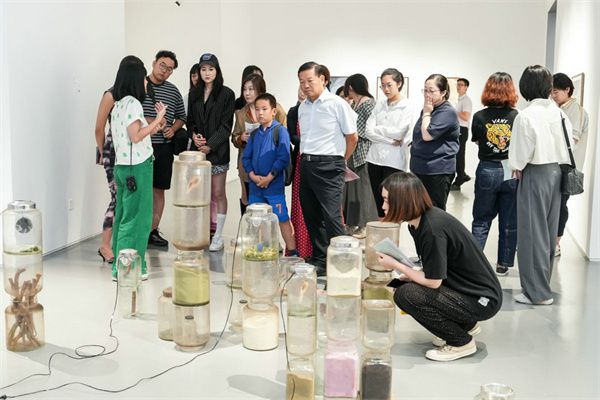
Visitors view Hong Kong artist Wing Po So's installation Polyglot: Mulberry at the second X Museum Triennial opens in Beijing on Aug 26, 2023. [Photo/Courtesy of X Museum]
For Hong Kong artist Wing Po So, who is from a family of traditional Chinese medicine doctors, her source of inspiration is inseparable from her emotional bond with the family's pharmacy.
Growing up surrounded by a potpourri of dried-up medicinal ingredients, the artist is known for using medicinal ingredients and everyday objects to create large-scale installations and sculptures.
"Every medicine cabinet drawer contains a universe and within every organ, there is a cosmological system," she said in a video introducing her work.
For the triennial, she created Polyglot: Mulberry, an installation consisting of 30-odd glass jars of Chinese medicine in which various parts of the mulberry—fruits, leaves, branches, roots and hosts, are stored. Like how she animated many of her previous artworks (for example, making sea shells move and breathe in the 2020 installation Sea Ear Hi-hat), she connected the dried or ground mulberry parts with small electrical devices so that they could move and make sounds similar to those of wind bells as if they are keen to strike up a conversation with any viewer nearby.
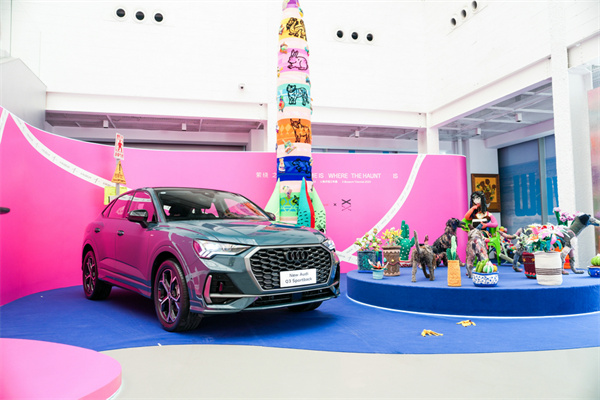
The crocheted installation co-created by Ms. Audi and artist Hu Yinping, is on display at the second X Museum Triennial in Beijing. [Photo/Courtesy of X Museum]
Apart from spotlighting the millennial Chinese artists who straddle cultures, the 2nd X Museum Triennial has also provided a platform for female artists as more than two-thirds of participating artists are women.
Having mounted many solo and group exhibitions featuring women artists from home and abroad, X Museum's effort to increase the visibility of female creatives is echoed by Ms. Audi, a platform launched in 2020 by Audi FAW to serve and support its female customers.
Ms. Audi invited Chinese artist Hu Yinping, whose work Xiao Fang was featured at The Endless Garment, a two-fold group exhibit at X Museum in 2021-2022, to co-create a large-scale crocheted installation for the triennial.
Dubbed "The Ideal Garden of a Female Engineer," the installation, on display at the museum's entrance next to a grey Audi Q3 Sportback, features a woman reading in a garden decorated with plants and flowers, with dogs keeping her company and a rocket standing close by.
Hu hoped her work could inspire women to dream big, embrace challenges, and become their ideal selves as advocated by Ms. Audi.
Home Is Where the Haunt Is runs until Nov 26.
If you go:
11 am – 6 pm, Monday to Friday; 11 am - 8 pm, weekends and public holidays
X Museum, Langyuan Station, E1 (Building 10), No.53 Banjieta Road, Chaoyang district, Beijing

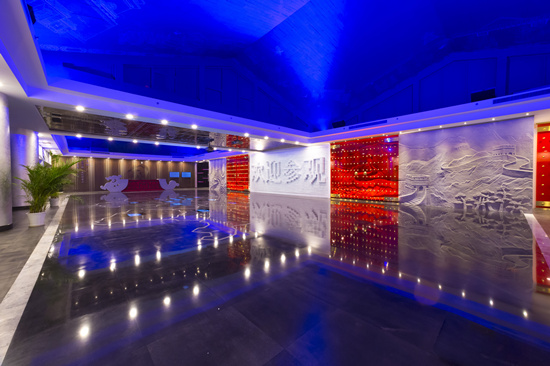 Responsibilities of the SOCAAC
Responsibilities of the SOCAAC Experiencing Beijing 2023
Experiencing Beijing 2023